Dong Thap province: Media training on the Sarus Crane Conservation Project
In the morning of November 20, Tam Nong District People's Committee arranged a training session on the topic of Sarus Cranes in Tram Chim National Park with the goal of educating, informing, and encouraging their development and restoration. This second course was offered both directly and online to leaders of several departments of Dong Thap province, and People's Committees at the district level.

Delegates attend training at the Tam Nong district. Photo: by Thanh Long
Mr. Doan Van Nhanh, the Deputy Director of the Center for Conservation and International Cooperation (which is part of Tram Chim National Park), gave an overview of the fundamentals and salient features of biodiversity management, conservation, and Tram Chim National Park.
Covering 7,313 hectares, Tram Chim National Park is the fourth Ramsar site in Vietnam and the 2,000th worldwide. It is a national monument and a part of the East Asia-Australia Migratory Bird Flyway Network and was recognized as such in 2017. There are 104 kinds of waterfowl, including 16 uncommon species of conservation value, including the Sarus Crane; there are 139 plant species, with Melaleuca trees making up over one-third of the park's surface.

Dr. Tran Triet informed about the conservation and development of Sarus Cranes and noted the points that need to be focused on in propaganda work and raising awareness in the community. Photo: by Thanh Long
Dr. Tran Triet, a lecturer at the University of Natural Sciences (Ho Chi Minh City National University) and the director of the Southeast Asian Crane Conservation Program, claims that the Sarus Crane is found throughout northern Australia, Southeast Asia, India, and Nepal. Indian, Oriental, and Australian Sarus Cranes are the three subspecies of the Sarus Crane. Of these, the Oriental Sarus Crane is the least common and is found in Southeast Asia, mostly in the Mekong River basin, which includes Myanmar, Thailand, Cambodia, and Vietnam.
At one point, Tram Chim National Park had more than 1,000 Sarus cranes, the most in Vietnam and Southeast Asia. However, the population is currently quickly decreasing. The province of Dong Thap's People's Committee has released a project to preserve and grow the sarus crane population in Tram Chim National Park from 2022 to 2032 in an effort to recover the species.
Building an ecological rice production area in the National Park's buffer zone; restoring the cranes' habitat in the core zone; establishing livelihood development and environmental education programs in Tam Nong district; and collaborating with Thailand to receive young cranes and transport them to Tram Chim and raise them are the four components of the project. By restoring, conserving, and developing Sarus Cranes in Tram Chim National Park, the goal is not only to have fifty cranes living and breeding here and in the surrounding area in ten years, but also to preserve the park's ecosystem and help people grow their incomes through tourism, livelihood models, and other means.
Regarding Tram Chim National Park's conservation significance, Dr. Tran Triet highlighted the park's "model of the Dong Thap Muoi ecosystem" and deemed it to be its most significant value. To help achieve NetZero by 2050, it also aims to conserve the importance of carbon storage, wetlands, acid sulfate soil ecosystems, the Mekong Delta's last seasonally flooded grasslands, and Dong Thap province's iconic crane and lotus.
Nguyet Anh
Translated by Gia Vi
https://dongthap.gov.vn/chi-tiet-bai-viet-tieng-anh/-/asset_publisher/n7gyLONAyDF6/content/id/21196204?plidlayout=15979
News
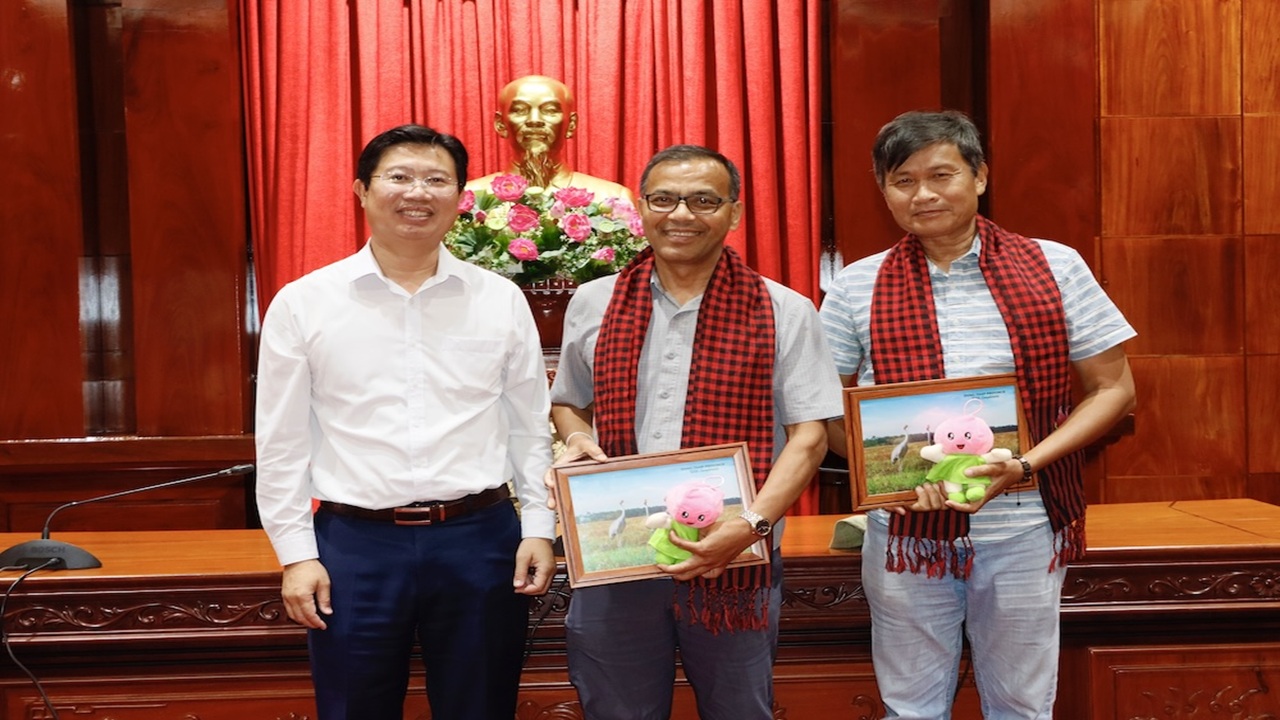
Leaders of the Provincial People's Committee work with the International Crane Foundation
Before the working session with Tram Chim National Park (the world's 2,000th Ramsar site), Dr. Mahendra Shrestha, Deputy Director of the International Crane Foundation, and Dr. Tran Triet, Director of the International Crane Foundation's Southeast Asia Crane Program, met with the Provincial People's Committee leaders at noon on October 14. Mr. Huynh Minh Tuan, Vice Chairman of the Provincial People's Committee, and leaders from other provincial departments met the delegation.

Tram Chim National Park Ready to Bring the Sarus Cranes Home
Tram Chim National Park is completing the final steps to prepare for bringing the sarus cranes home. This is an important part of the Conservation and Development Project for the Sarus Crane (2022 - 2032), aiming to restore the population of this rare bird species in the Dong Thap Muoi region."

Sarus Cranes relocated from Thailand recover well at Saigon Zoo
On the morning of April 13, at Saigon Zoo, where six cranes transferred to Vietnam from Nakhon Ratchasima Zoo (Thailand) are being quarantined, experts from Thailand, Vietnam, and the International Crane Foundation discussed and assessed the health status of the cranes after three days of isolated care.

Dong Thap Welcomes First 6 Sarus Cranes from Thailand
To restore and expand the population of sarus cranes in Tram Chim National Park through captive breeding and reintroduction efforts, Dong Thap Province received the first six cranes from Thailand on the evening of April 10, 2025.

Controlled burn on Zone A1, Tram Chim National Park
Fire has played a significant role in the creation and administration of Tram Chim National Park throughout the last four decades. Sometimes fire destroys, and in many cases fire helps regenerate.
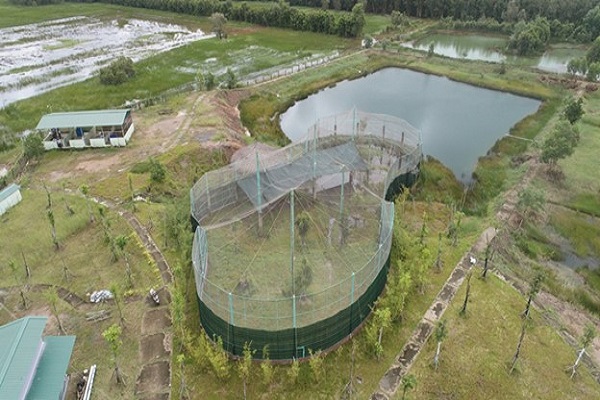
Investing in Infrastructure to Serve the Sarus Crane Recovery Program
The Chairman of the Provincial People's Committee approved the infrastructure project for the second phase of the Sarus Crane development and restoration program at Tram Chim National Park. Tram Chim National Park serves as the project's investor.
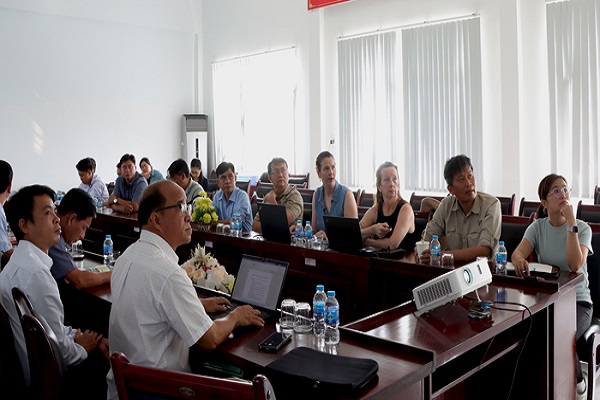
Experts from the International Crane Foundation guide how to care for and raise sarus cranes
One of the primary tasks of the expert delegation from the International Crane Federation (ICF) during their week-long stay in Tram Chim National Park (Tam Nong area) was to assist Tram Chim National Park in completing the necessary stages for supplies and qualified workers to guarantee that the sarus crane captive breeding procedure is carried out.
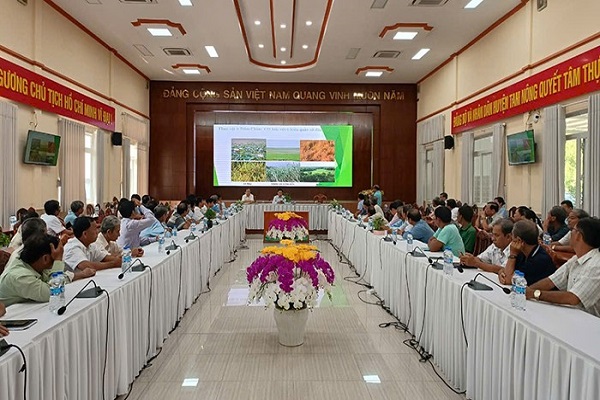
Communication skills training for the Sarus Crane Development and Conservation Project
On November 14–15, Tam Nong District People's Committee held a training session to prepare knowledge and communication skills for the Project on the Sarus Crane Development and Conservation at Tram Chim National Park in 2024.
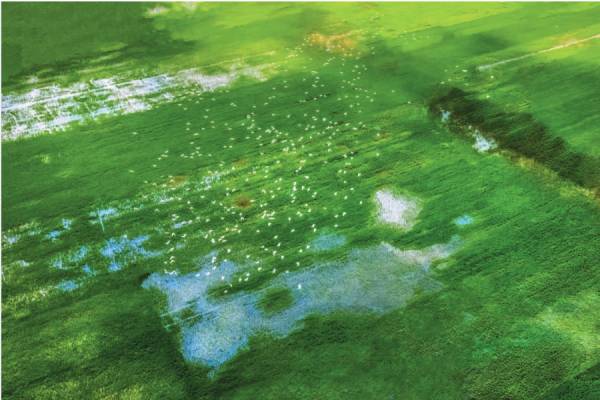
Conserving and Developing the Sarus Crane Population at Tram Chim National Park
The People's Committee of Dong Thap province has approved a project for the conservation and development of the sarus crane at Tram Chim National Park from 2022 to 2032, with a total estimated cost of over 184 billion VND.


